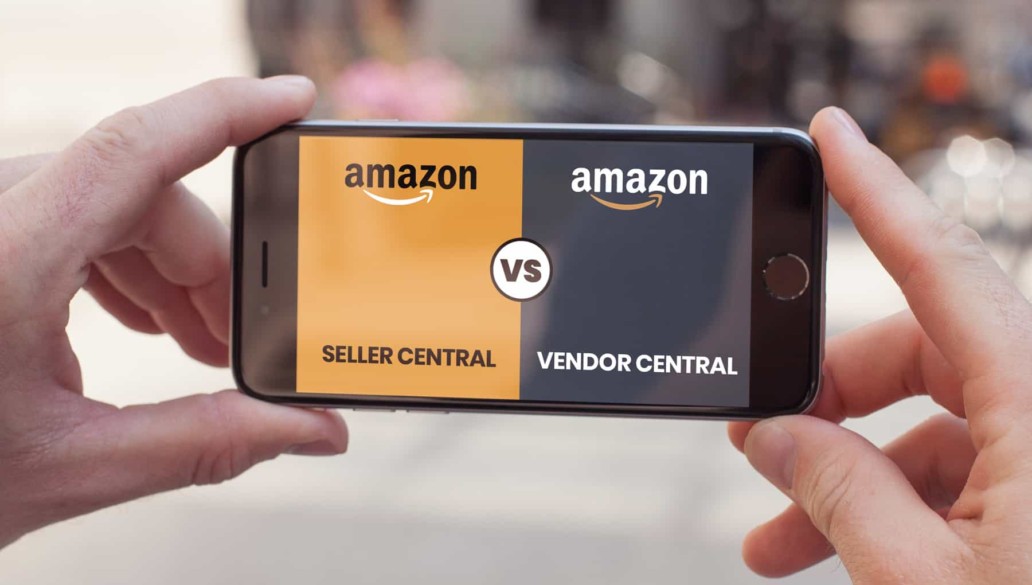Almost 90% of UK shoppers use Amazon, according to a recent study by Mintel. Here at Venture Forge, our own research across 25 different consumer markets has shown Amazon to be the market leader in all eCommerce categories. They are at least twice as big as the second-place retailer.
If you’ve not considered using Amazon to sell your goods, you might be missing a trick.
There are two ways to use Amazon as a platform for selling. You can either be an Amazon ‘Seller’ or an Amazon ‘Vendor’. These two approaches have their own advantages and disadvantages and understanding the way they differ is crucial in choosing which is the best option for your business.
What are the Differences?
The main difference between the two is that an Amazon Seller sells as a third party, retaining control of marketing, listing and pricing their products themselves. An Amazon Vendor actually sells their products to Amazon in a wholesale capacity and Amazon then list and sell the products themselves. You can spot such products as they are accompanied by a ‘Sold and shipped by Amazon’ tag in their listing.
How do They Compare?
Control
As an Amazon Vendor, you relinquish some control to Amazon. Once they have bought your products from you, you can choose to create listings and market your products yourself or let Amazon do it for you, along with storage, pricing and delivery.
The reduction in workload may seem appealing but make sure you’re comfortable with the level of control you hand over. Find the balance that works for your business.
Amazon Sellers are free to run their selling processes as they see fit – adjusting prices, fulfilling orders and managing stock themselves. In retaining control, they also forfeit the marketing and brand weighting of having their products sold as ‘Amazon’ items.
Costs
As an Amazon Seller, you pay a flat fee per month (around £20 + VAT) plus a percentage of the price of each item you sell. This tends to be between 7-15% depending on which category your products fit in to, although Amazon take a 45% commission on device accessories that pair with Amazon brand items. Knowing these percentages in advance and being able to work them into your financial plan means that costs are predictable and there are no nasty surprises.
In contrast, as an Amazon Vendor, you will be presented with ‘allowances’ – the term Amazon use to describe your costs. They apply allowances to cover damage and loss of items, marketing costs and freight of goods. Amazon set out their proposed rates at the start of the contract and it is up to you as a business to decide whether to accept them. Some negotiation may be possible but is taken on a case by case basis. The terms are reviewed every year, and it is not unusual for Amazon to attempt to increase costs at these annual review points or, indeed, at any point throughout the year if items are not selling well.
Sales
One of the most significant differences between the two selling options is the potential for impact on sales.
Amazon Vendors have a tag added to their product listing to inform customers that the item is ‘Sold and shipped by Amazon’. The consumer trust that Amazon have earned means that customers may prefer to buy from them rather than a third party, thus driving up sales. This is especially relevant for high-value items where the consumer prefers the security of buying from a reputable brand.
Although the opportunity to have Amazon’s name to your products is appealing, remember that this comes with the significant sacrifice of handing the control of your pricing and stock management over to them too. With a reputation for flouting Minimum Advertising Pricing agreements, expect price drops at any time.
In contrast, Amazon Sellers retain the ability to set price points themselves but are listed as third-party sellers. This may not necessarily put customers off buying, as they know that they still have the backing of and support from Amazon if something goes wrong with their purchase. The merchant must weigh up how influential they think the ‘Sold by Amazon’ tag is and whether it offsets the loss of control overall.
Amazon pay Vendors and Sellers differently. Sellers are paid every 7-14 days so can factor this in when managing cash flow. Vendors are usually offered 30, 60 or 90-day payment terms, but there are plenty of reports of Amazon dragging their feet when it comes to paying Vendors on time.
Pricing
Amazon Seller and Amazon Vendor present significant differences in the sales process and potential profit margins for your business.
Once Amazon have purchased stock from an Amazon Vendor, they are then free to price the products as they see fit. This can often mean price matching and discounting with no warning, and there are no guarantees that Amazon will honour pre-agreed Minimum Advertised Prices. Once a price has been lowered to compete with other online sales, you may have a hard time getting Amazon to raise it again.
As an Amazon Seller, the pricing of your product lies with you. You have the freedom to raise and lower prices depending on the factors influencing your business at any given time. The drawback is that you may not always be offering the most competitive price, although this can sometimes be a strategic move to tie in with company branding or to manage stock levels.
A crucial factor, and an advantage of the Seller model, is that you are selling directly to your customer at retail prices. As a Vendor, you are selling to Amazon themselves – at wholesale prices, with the obvious associated implications for your profit margins.
Venture Forge studies repeatedly show that even after costs, the Seller model delivers in excess of 10% increase in profit margins (sometimes even as high as 40%) compared to the Vendor model.
Stock Management
Amazon Sellers retain full responsibility for monitoring and controlling their stock levels and can plan and react to changes accordingly.
Stock management is one of the processes that Amazon take control of when a business signs up as a Vendor. Although on the face of it this seems like an advantage, Amazon have been known to let inventories run low, or even empty, without informing the vendor. This results in products showing as out of stock which can have repercussions for the Google ranking for product keywords, brand loyalty and customer satisfaction.
Support
Amazon offer a support service for merchants, but the quality of support for both Sellers and Vendors seems inconsistent at best. The outcome of your query can often depend on the expertise of the individual representative you happen to have your call connected to. Amazon Vendors based in the UK are assigned an onboarding manager for a few months after signing up, but retailers report that subsequent and ongoing support can be insufficient.
Which One is Right for my Company?
Here at Venture Forge, we have undertaken several studies to explore the features, benefits and drawbacks of both the Amazon Seller and Amazon Vendor models.
As a result of our findings, we believe that the Amazon Seller route is the best option for the vast majority of online merchants – providing that a company has the right skill set to manage the process effectively, whether that be internally or through outsourcing.
The restrictions applied to Amazon Vendors demand sacrifices and compromises that we feel outweigh the benefits in most cases.
With the right guidance and support, you can optimise your presence as an Amazon seller and still retain full control of your business processes.
If you’d like to know more about trading on Amazon, drop us a message or give us a call.

